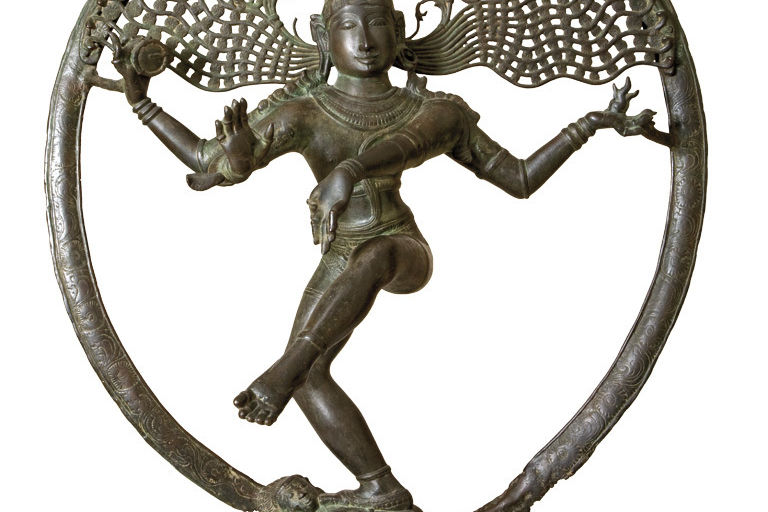Works of Heart
LOOK AROUND. What we value most is what we save. And whether the treasure is a knickknack on a shelf, the great old house with a plaque, or a valuable work of art, they all have one thing in common: a good love story—sometimes deep and warm, sometimes tough.
That’s the basis for the Portland Art Museum’s new, continually expanding installation, Object Stories. Inspired by National Public Radio’s “StoryCorps,” in which people from all walks of life share and record recollections of friends and family, the museum’s director of education, Tina Olsen, is inviting the wider public to bring a cherished object to the museum—or pick out a work of art inside—and videotape a story about it.
In the museum world, that’s a bold move. Because as much as museums are about what’s inside, they are equally about what’s kept out. And the stories told in their wall plaques and audio guides are almost always in the voice of the museum. But for a few weeks, Olsen is blasting the borders between inside and out, official and personal, to invite everybody to share.
In that spirit, we invited some well-known Portlanders to share their personal stories (and in a couple of cases, songs) about the works of art they are most drawn to in the museum’s collection.
Shiva Nataraja
12th century, bronze
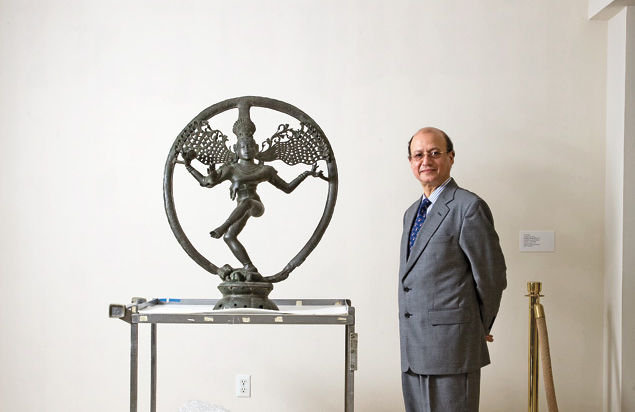
Dr. Sanjiv Kaul with Shiva Nataraja
Image: Steven Scardina
Dr. Sanjiv Kaul is head of cardio-vascular medicine at Oregon Health & Science University. Kaul pioneered the use of microscopic gas bubbles in cardiovascular imaging and, more recently, in breaking apart blockages in the blood system.
When I came to Portland, I was surprised to find this Shiva and no other Indian piece in the whole museum. It’s a beauty: Chola Dynasty, South India, 12th century—the pinnacle of the bronze-casting art form. In the Indian philosophy there is an eternal reality called “Brahman”—the energy of the cosmos. Brahman is impossible to touch, so humans need forms, because that’s how they perceive the world. There is the creator, the preserver, and the destroyer. Shiva is the destroyer. Here, he is doing a tandav dance and trying to destroy the demon, ignorance. It’s the ignorance of accepting everything around us as real.
I am interested in what it took during that period to make something so gorgeous. I come back to see it because I want to have it. There is such a glow and movement in this figure. It’s as good as you can get in a Shiva Nataraja.
I’m not religious by nature. I don’t follow rigid principles. I’m pretty original in my thinking. Hindu is not exactly a religion. You can worship Shiva or Ganesh, or you can be an atheist. Since you can’t know Brahman, you try to reach it through something you feel comfortable with. That makes you very flexible in your thinking.
Rape of Europa
Michael Spafford, 1967
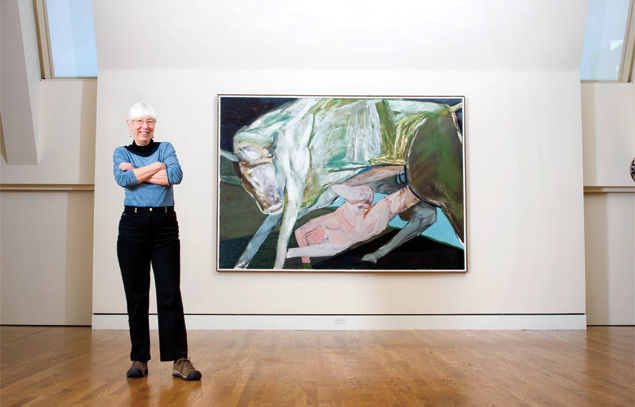
Lucinda Parker and Michael Spafford’s Rape of Europa
Image: Steven Scardina
Lucinda Parker taught painting at the Pacific Northwest College of Art for 32 years. Her own large-scale abstractions can be found in many private and public collections and, most prominently, at the northwest entrance of the Oregon Convention Center.
Michael Spafford has spent almost his whole life on mythological subject matter. Europa, of course, was just one of Zeus’s many lady friends that he took without asking. Why would a Northwest painter paint myths? To say, “I know something about the ancient history of mankind.” But the painting also references how human beings treat each other.
We’ve had a shocking number of homicides of males killing females: husbands killing wives, boyfriends killing girlfriends—there were 23 of them in Oregon last year. Spafford might not worry about being relevant. He might just like to paint this. But the painter Titian put Europa draped atop a bull swimming in water. She looks like she’s enjoying it. It looks festive. This looks like she’s fighting back—like a feminist version. He cuts off the feet and hooves, so it’s all about the torsos.
People always say that, in a painting, you can have shape or gesture, or you can have speed or clarity. But this painting has it all. There’s an ad hoc quality. Yet it’s finished enough to make an impact on you. As a painter, I like seeing another artist take a risk. This is unapologetic. It isn’t trying to please anybody.
Little Pastry Cook
Chaim Soutine, 1921

Rachel Blumberg and Chaim Soutine’s Little Pastry Cook
Image: Steven Scardina
Rachel Blumberg is a drummer and singer who has performed and recorded with numerous Portland bands, including the Decemberists and M. Ward. She is also a painter.
I’ve been coming to the museum since a field trip in the third grade. But in college, I got obsessed with the period of the early 1900s in Montparnasse and Montmartre. When I first saw this, I was like, “That’s my favorite painting.” The colors and the emotion really resonate. I wish I could transport myself back: all these artists getting together and exchanging ideas. It was a heady time. People were not afraid to band together over ideas. We actually have that a little bit here in Portland now.
I would say I’ve come to see it 10 times. In that time frame, I started painting—and pretty seriously. Before that, I saw a whole thing, but now I get up close and see the frenetic movement of the paintbrush. I see the look in his eyes is really emotive, but I also look technically at what’s over and what’s underneath the eyelids. I had never really noticed the chair is, like, moving. I notice now how the brushstrokes and colors affect that. I was a touring musician for five years, a lot of it in Europe. I’ve seen a lot of art. But this piece is always stuck in my head. I can conjure it very easily. There’s something about that red.
The Oarsmen
Thomas Eakins, circa 1873
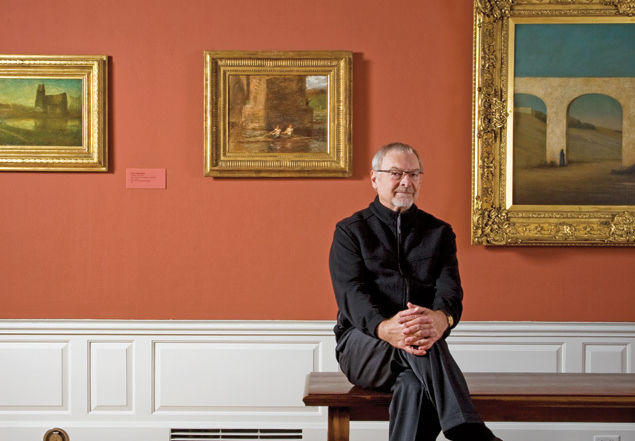
Thomas Hacker and Thomas Eakin’s The Oarsmen
Image: Steven Scardina
Thomas Hacker and his firm THA Architecture have designed and restored civic and university buildings throughout the West, among them branch libraries of Multnomah County and the Mercy Corps World Headquarters.
When I first moved to Portland, I lived on the South Park Blocks. I came to the museum several times a week. It was my living room. Some of the paintings became family: Soutine, Ryder, and Rousseau. But the Eakins became important in a more emotional way. It represents where I came of age as an architect: Philadelphia. I was on the crew. I rowed through this bridge—the Girard Avenue Bridge. I like the painting because it’s a sketch—incomplete—like I was, learning and developing, and filling out the rest of the picture. When I started visiting the museum, it was 1983, in the middle of a recession. I was broke. I felt confident. But everything was in chaos. The painting brought back powerful memories—good memories, rich memories.
What I like about it is the quality of the hand. It’s what I try to do in my art and my architecture: let the hand come through. There’s something really beautiful about that transfer of energy between a human body and a surface. Every time I come back and see it, my own life has changed a lot. I’ve become more analytical. I find meaning in it that goes beyond the actual painting, in what it’s projecting as poetry, as a story.
Paddles
Tlingit, Early 20th Century
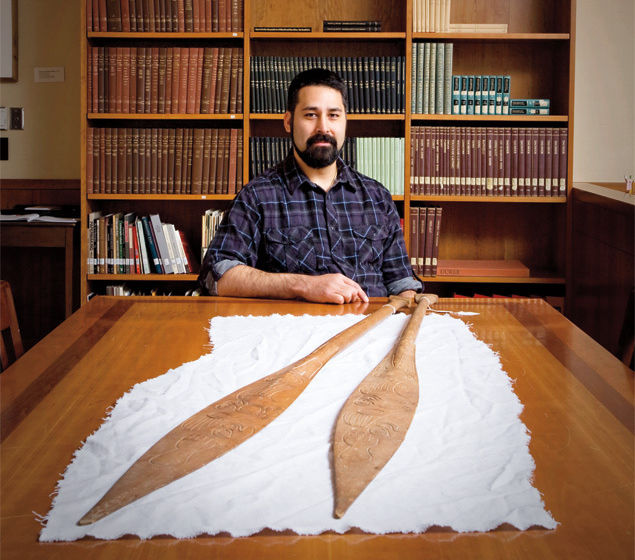
Shirod Younker with Tlingit paddles
Image: Steven Scardina
Shirod Younker is an artist and the program manager for the A. Susana Santos Journeys in Creativity: Explorations in Native American Art program at the Oregon College of Art & Craft.
I paddle a lot with three canoe families in the Tribal Journeys movement. It began in 1989 as a way for the native people of the Puget Sound to retain their ancestral rights to the region’s waterways. But it also brought back the potlatch and the songs and the dances. The physical action connects us to our ancestors.
When I first laid eyes on these paddles, I was excited. They are more northern style: Tlingit. They are extremely thin and light. When you’re first carving out a paddle, you tend to make the whole thing a big beast. But put in 10,000 strokes over a day canoeing with a paddle that weighs four pounds, and that’s 40,000 pounds you lifted. If the paddle weighs less than two pounds, you’ve lowered the stress on your body. After I saw these, I started taking off a lot more wood from my paddles and making the edges straight. There’s no tool marks on these. I’m using power tools and power sanders, and it’s still hard to get all the marks out.
I’m Miluk/Coquille from Coos Bay. We were one of the first tribes to have contact with non-natives, so really the first to lose our culture by trading things away. For me, making paddles is a conduit to the canoe journey. Things will not go back to the way they were before, but this is a starting point.
